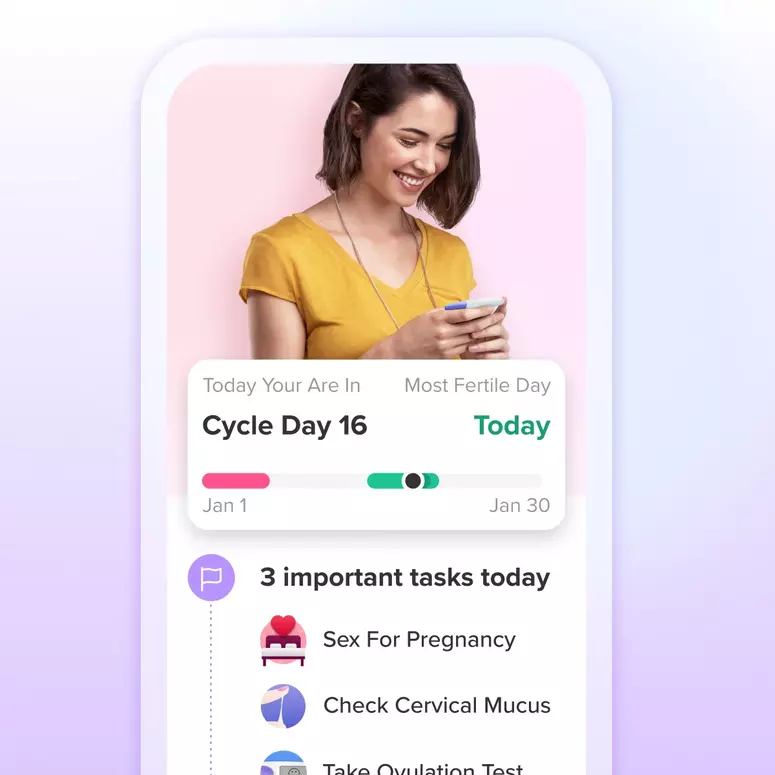"I think I am late - what is going on?
From our blog.
-----
How many times have we looked at Glow, rechecked the days, and wondered that phrase out loud – some of us with hope, some of us in fear. Too many to count? Well, welcome to the club.
It’s called the “Our-bodies-are-not-Swiss-watches-and-sometimes-they-do-as they-damn-well-please” club. Membership: 2 Billion or so.
But the fact is – we are not always late when we think we are. In fact, even if your cycles are regularly 28 days, and this month, they were 32, does not mean that your period is “late”. Because that depends entirely on WHEN ovulation occurred.
Let’s break it down:
Our cycles are made up of three phases.
Phase 1 – The Follicular Phase.
During this phase, the hormone estrogen causes the lining of the uterus to grow. This lining, called the endometrium starts to develop to receive a fertilized egg should you become pregnant. The increase of another hormone, called the follicle-stimulating hormone (FSH), in turn stimulates the growth of ovarian follicles. Each follicle contains an egg. By late in the follicular phase one, or more, eggs have reached maturity and are ready to be released.
Estimated Duration: 14.5 days on average, with a standard deviation of 3.5 days. (However, the phase has been known to last much longer – especially in women with PCOS.)
Phase 2 – Ovulation
Ovulation is what happens when a mature egg is released from your ovarian follicle to the nearest fallopian tube. An increase in LH triggers ovulation. (This is what we keep testing for with all those OPKs) The egg then travels into the uterus. It takes about three to four days for the egg to travel toward the uterus. If fertilization is to occur, it must happen within 24 hours of ovulation or the egg degenerates.
Estimated Duration – 1 Day
Phase 3 – The Luteal Phase
After ovulation, your body starts producing large amounts of progesterone, a hormone that stimulates the uterine lining development in preparation for implantation of a fertilized egg. About five to six days after fertilization, the fertilized egg enters your uterus and becomes embedded in the lining. With implantation, cells that will eventually become the placenta begin to produce the “pregnancy hormone” or human chorionic gonadotropin (HCG). It interrupts your menstrual cycle by telling your body to produce progesterone. This prevents the loss of your lining.
If however, you are not pregnant, the lining of the uterus simply sheds through the vaginal opening. Then, a new menstrual cycle begins.
Estimated Duration – 13 days, with a standard deviation of 2 days. The Luteal phase is remarkably consistent from women to women.
Okay. Three phases. And you are 4 days late. Which phase is to blame?
Scenario 1: You are 4 days late. You have not taken any tests yet.
What gives? Well, of course, you could be pregnant. In that case, it is your Luteal Phase that has lengthened to accommodate the increased progesterone in your body. The only way to know is to take a home pregnancy test (hpt) – which is incredibly accurate starting with the day of your missed period. So please take a test.
Scenario 2: You are 4 days late. But the hpt is consistently a BFN.
What gives? First answer this: Do you know when you ovulated? If you do not, then it is very possible that this month your follicular phase lasted a little longer than usual.
But why would it do that? Many reasons. Diet, exercise, stress, sickness, your weight, your caffine intake, whether you smoke, whether you have recently been on any oral contraceptives. You name it – and it probably affects your Follicular Phase.
When you are late – a vast majority of the time – you period is not really late. It will still arrive 12 to 14 days past ovulation. However since you most likely ovulated later in your cycle, your period also occurs, later.
Scenario 3: You are 4 days late. You know EXACTLY when you ovulated. And your HPTs are still BFN.
What gives? First let me say that it is difficult for anyone to say conclusively that they know exactly when they ovulated.
But a couple of factors help narrow down the window.
1. You’ve been charting your bbt and you saw the dip followed by the spike in temperature that lasted for several days.
2. AND this tied in nicely with the OPKs you have been taking that showed a clear LH surge.
3. You felt one-sided ovulation cramping, and possible experienced some ovulation spotting.
4. Your doctor performed a vaginal ultrasound and told you that you would be ovulating soon.
5. Your blood work confirmed it.
If all – or most – of this happened and you feel very confident that you know when you ovulated AND you are more than 18 days past that ovulation date without a period or a positive pregnancy test – then you have every right to be stumped. Your period is most definitely late. Please speak to your health care professional.
So that’s it. Hope this helps with some concerns we consistenly hear in our community. And reinforces yet again the importance of knowing our bodies well, charting our symptoms, and figuring out exactly when we ovulate.
KEY TAKEAWAY: The Luteal Phase is very consistent. If you are late – then the length of your Follicular phase is most likely the real culprit.
Achieve your health goals from period to parenting.




